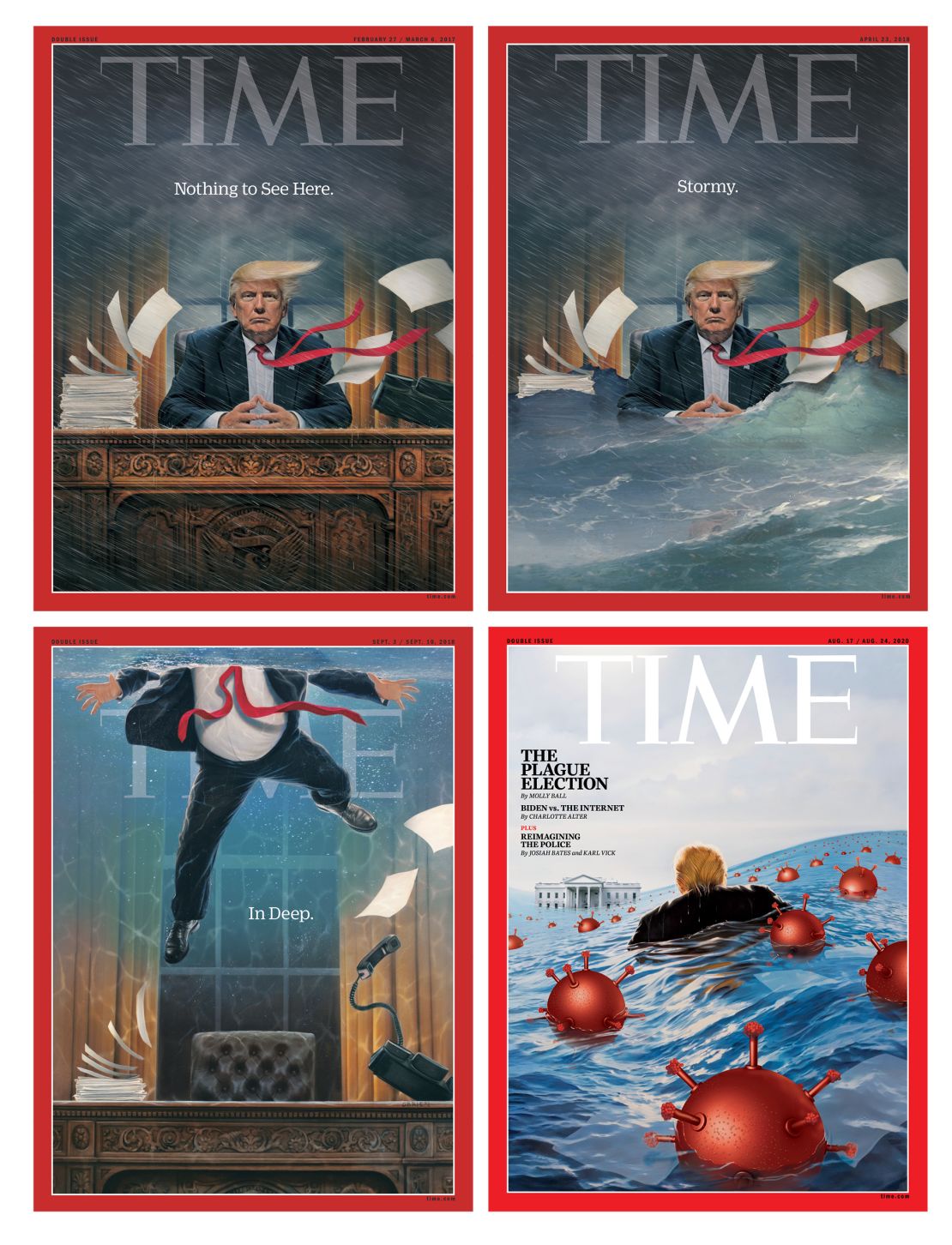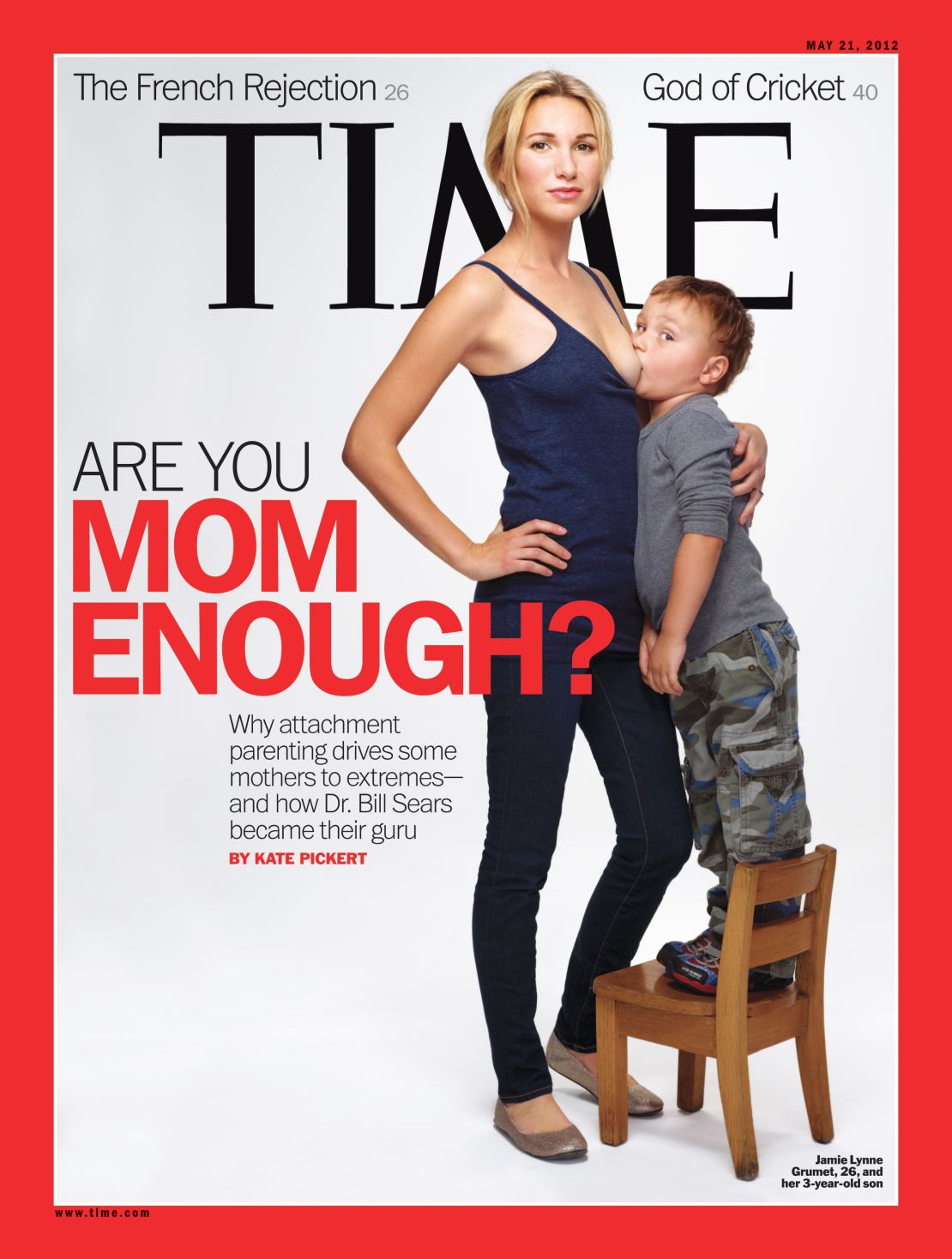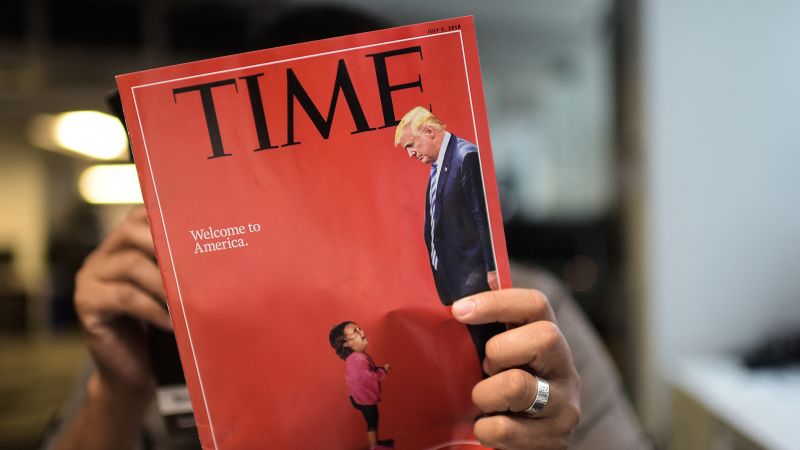CNN
—
If a picture is worth a thousand words, then D.W. Pine — Time’s longtime creative director who recently published his thousandth cover — certainly has a lot to say.
Pine, who joined the magazine in 1998, has put the world’s most recognizable faces within the storied red border, from Pope Francis and Steve Jobs to Vladimir Putin and Kim Jong-un. He’s also the man behind some of the 21st century’s most divisive covers.
Under Pine, Time published some covers that drew controversy, such as its May 21, 2012, “Are You Mom Enough?” cover, depicting a 3-year-old boy nursing at his 26-year-old mother’s breast. He also oversaw the magazine’s February 27–March 6, 2017, “Nothing to See Here” cover, showing President Donald Trump behind the Resolute Desk, subsumed in a thunderstorm. And, under Pine, Time ran its August 9, 2010, “Aisha” cover, showing an 18-year-old Afghan woman, whose nose was cut off by the Taliban.

Not all covers, which Pine called “journalist poster(s),” are intended to be divisive or elicit provocative responses. The creative director said Time is “successful at times in breaking through the clutter” because its covers don’t always focus on world leaders, often featuring CEOs and celebrities who “aren’t necessarily considered provocative” but who remain “very important.”

“Success comes from knowing when to lean into that more ‘provocative’ approach when a topic needs it,” he said.
Still, Pine lingered on how Time’s divisive covers deftly convey multiple — and sometimes antithetical — messages. In a market with countless opinion and analysis pieces, the simplicity of an image can sometimes resound more loudly than words. And being placed within the magazine’s red border “really changes someone,” Pine said.


The creative director is loath to put any text on the magazine’s cover, instead letting the images speak for themselves.
For example, the “Nothing to See Here” cover has a simple duality, Pine said: For Trump supporters, the cover evokes feelings of resilience; for the president’s opponents, it highlights the chaos Trump has ushered into the Oval Office.
Meanwhile, Time’s February cover, which placed Elon Musk behind the Resolute Desk, used more overt symbolism since the magazine “didn’t have to say a lot.” Pine stressed that the simple action of placing “the man behind the desk that everyone knows (works) as a visual cue.”
“Musk was pulling a lot of the levers, so, sure, we put the two of those together,” Pine said. “All I really wanted was him having a little coffee in his hand because it was like … while he was doing all the work that he and DOGE were doing, he’s just drinking a cup of coffee, it’s like a normal day.”
Like many in the media, Pine is mulling how best to distinguish the magazine’s current coverage from its work during the first Trump administration. Trump has already been named Time’s Person of the Year twice, first in 2016 and more recently in 2024. And with 45 appearances, he is the second-most featured person on Time’s cover, behind Richard Nixon, who appeared 55 times.
During Trump’s first administration, Pine said every moment felt important enough to put on the cover “because it was so different, and we wanted our readers to understand it.” This time, Pine said the magazine’s covers will adapt to meet a different moment.
“Looking ahead, we will continue to cover the president. Some will be provocative,” Pine said. “But I don’t know how much we have to do the same thing we did again, no longer do we have the shock value of stuff that the administration is doing now.”
Already, one of Pine’s covers has found itself in the president’s crosshairs. After Pine put Musk behind Trump’s desk, the president took aim at the magazine, asking, “Is Time magazine still in business?”
Trump’s response should be taken “with a grain of salt,” Pine said, emphasizing that the president has a history of brushing off criticism he dislikes from reporters and businesses alike with jokes. And Time is used to getting attention from Trump, Pine said, noting the president is “very interested about being on the cover of Time.”
“He’s constantly honored when he’s on the cover, but he also has said he only likes about 20% of them,” Pine said.
With three years and 10 months left in Trump’s second term, Pine has few doubts that he will soon appear in the red frame more than Nixon, a fact that will likely please the president. Trump has placed himself within its red borders at least once, and in January, the White House shared a fake Time cover — which, ironically, echoed Time’s June 18, 2018, “King Me” cover.
Despite Trump’s fascination with Time, his overtaking Nixon — yet more overt symbolism — as the magazine’s most-featured person will likely see covers that court backlash. But the creative director stressed that’s “good for us.”
“We want to be able to question authority,” Pine said. “If no one was talking about us, then I think we’d have a problem.”





